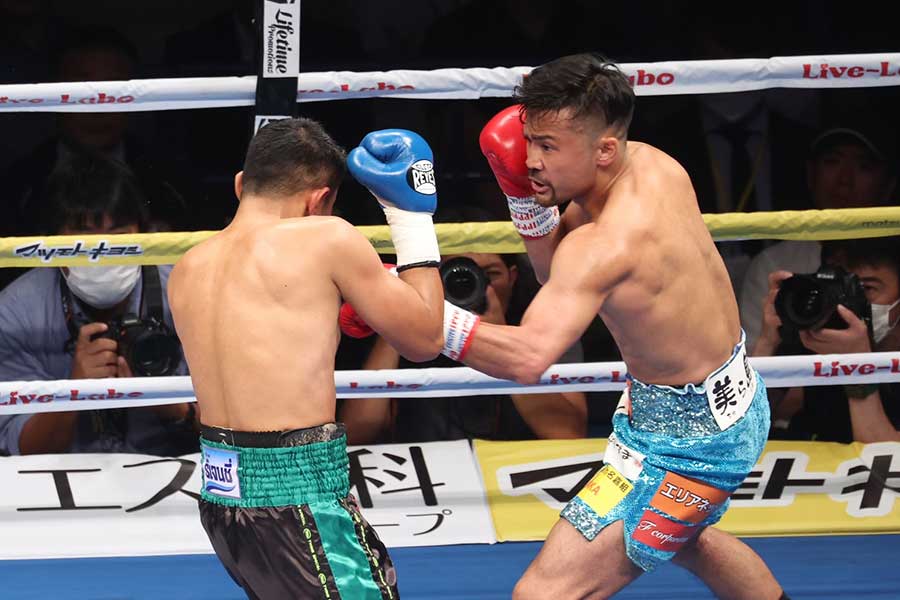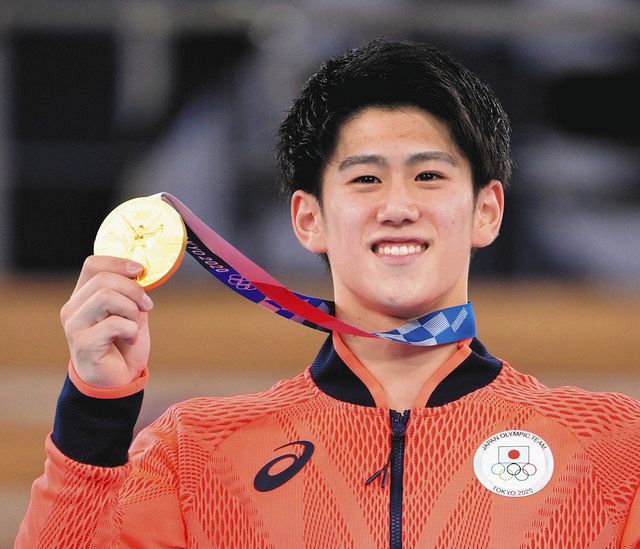
In the world of boxing, not only the speed and power of a punch, but also the movement of the feet are important factors that determine victory or defeat.
For this reason, boxers not only train their strength, but also train daily to improve their agility, stamina, and sense of rhythm.
Jumping rope has been an essential part of boxing training for many years.
But why do so many boxers spend so much time on the seemingly simple rope jump?
In this article, we’ll take a deep dive into why jumping rope is important in boxing training, as well as some effective methods and tips for boxers to use when jumping rope.
目次
- 1 The value of jumping rope in boxing
- 2 Various effects of jumping rope and their reasons
- 3 Do you incorporate jumping rope into your training for other sports/combat sports other than boxing?
- 4 Types of jump ropes recommended for boxers and how to choose them
- 5 Jumping rope menu to incorporate into boxing training
- 6 Tips for effectively jumping rope
- 7 Summary: Why boxers jump rope and its deep meaning
The value of jumping rope in boxing
In boxing, jumping rope is more than just a warm-up.
This simple exercise is ideal for developing the speed, timing, rhythm, and leg movement that boxers need.
Additionally, jumping rope can help improve your cardiovascular fitness, build stamina, and even improve your concentration.
These abilities greatly affect performance in the ring and are important factors that determine the outcome of a match.
Historical background of boxing and jumping rope
The relationship between boxing and jumping rope has been around for a long time, and there are records of boxers incorporating rope jumping into their training as early as the 19th century.
Jumping rope has been widely recognized as an effective way to improve the agility, balance, and footwork that boxers need to demonstrate in the ring.
In addition, many famous boxers throughout history have incorporated it into their training, as it not only contributes to athletic ability but also mental strength.
Why jumping rope is essential for boxer training
There are many reasons why jumping rope is essential for boxer training. First, this exercise requires high cardiorespiratory fitness and builds the endurance and stamina that must be maintained during the competition.
It’s also great for developing quickness and nimbleness on your feet to move quickly and accurately around the ring. Jumping rope not only strengthens your leg muscles, but also strengthens your core, which is the foundation for throwing powerful punches.
Additionally, jumping rope helps hone your sense of rhythm and timing. In boxing, the timing of attacks and defenses is extremely important.
By jumping rope, boxers can naturally improve these abilities.
It also contributes to improving concentration, and by jumping rope, you can demonstrate high performance even in training or competitions that require long periods of concentration.
Overall, jumping rope is a training method that comprehensively develops essential skills for boxers to perform at their best in the ring.
For this reason, jumping rope is still considered a basic and important training in the world of boxing.

Various effects of jumping rope and their reasons
Jumping rope may seem like a simple exercise, but it’s actually a multifaceted training method that can improve multiple physical abilities at the same time.
Below, we will delve into the effects and reasons why jumping rope is so useful in boxing.
Improved stamina and endurance
Jumping rope develops high cardiovascular fitness and improves endurance. Jumping rope continuously forces your heart and lungs to work, increasing blood flow and increasing oxygen uptake efficiency.
This increases your overall body’s endurance, making you less likely to feel fatigued during long training sessions or matches.
Jumping rope also functions as a relatively high-intensity interval training exercise, which can help improve your body’s ability to recover.
Training footwork and reflexes
Jumping rope is an ideal exercise for developing speed and nimbleness on your feet.
Boxing in particular requires quick foot movements to quickly evade an opponent’s attacks and take advantageous positions.
Jumping rope can effectively train the footwork, balance, and reflexes needed in these situations.
By regularly jumping rope, you will feel more stable on your feet and your movements in the ring will be more agile and precise.
Developing a sense of rhythm and coordination
Jumping rope is a great exercise for improving your sense of rhythm. Jumping a rope requires precisely timing your movements, and this process naturally develops a sense of rhythm.
Jumping rope also requires coordinating the movements of your hands and feet at the same time, which improves your whole-body coordination.
In boxing, punches and dodges are performed in rhythm, so the sense of rhythm and coordination cultivated through rope jumping directly contributes to improving technique.
Through these effects, jumping rope can be said to be a form of training that trains all of the physical strength, technique, and mental skills that are essential for boxers.
For this reason, jumping rope is widely used as basic training in the boxing world.

Do you incorporate jumping rope into your training for other sports/combat sports other than boxing?
Jumping rope is incorporated into training for many sports and martial arts, not just boxing.
The reason for this is the multifaceted training effect that skipping rope provides. In particular, warm-up effects, developing a sense of rhythm, and improving stamina are directly linked to improving player performance in various competitions.
Jump rope training can improve endurance of specific muscle groups, cardiovascular fitness, core strength, and more.
For example, by raising your knees high and jumping, you can train yourself to take quick steps, develop your sense of balance, and respond to changes in rhythm by making it look like you’re running on the spot.
Additionally, the “Ali shuffle,” a movement in which you jump by crossing your legs back and forth, is known to have been used by the legendary boxer Muhammad Ali, and is effective for training to acquire quick movements.
This effect of jumping rope is especially important in martial arts, as it increases the ability to control the rhythm and surprise the rhythm when predicting the opponent’s movements.
Jumping rope also helps create a rhythm for attacks, allowing you to make movements that are less predictable for your opponent.
By practicing along with the music, you can enjoy the changes in the rhythm while practicing, and you can also expect to have the effect of increasing your mood during the warm-up stage.
Overall, we can see that jumping rope is used in a wide range of fields, not just for fitness training, but as a versatile training tool that directly contributes to improving performance in sports and martial arts.

Types of jump ropes recommended for boxers and how to choose them
Choosing the best jump rope for boxing training depends on your training goals and individual skill level.
However, weight, length, and material are generally important selection criteria.
Benefits of heavy jump rope
- Improves muscle strength : Heavy jump rope provides greater muscle load than regular jump rope, especially strengthening your arm, shoulder, and back muscles.
- Increases the power of your punches : Using a heavy rope will strengthen your wrist and forearm muscles, which will directly increase the power of your punches.
- Improves stamina and endurance : The additional load of weight also improves cardiovascular fitness, and training for longer periods of time increases stamina and endurance.
How to choose the length and material of a skipping rope
- Length : The length of the jump rope is very important.The ideal length is for the end of the rope to reach the bottom of your arm when you hold both ends and step on the center of the rope with one foot. . This makes it easier to jump the rope and optimizes the distance between your feet and the rope.
- Material : The material of the rope is also important as it affects its durability and comfort. There are a variety of materials such as nylon, leather, and vinyl, but for boxing training, we recommend materials that are highly durable and have a moderate weight. Vinyl ropes are light and easy to handle for beginners, but if you are looking for a heavier jump rope, ropes made of leather or woven metal are better.
By using different types of jump ropes as your training progresses, you can improve various abilities in a well-balanced manner.
By choosing the right skipping rope, you can maximize the effectiveness of your training.

When it comes to jumping rope during boxing training, it is effective to start with basic skills and gradually progress to advanced techniques.
Here are some examples of jump rope techniques and training schedules to help you with that process.
Jumping rope techniques from basic to advanced
-
Jumping with both feet :
- Suitable for beginners, perfect for learning balance and rhythm.
- Jump and land evenly on both feet.
-
Alternate leg jump :
- Helps improve footwork and alternates jumping on one leg at a time.
- Train speed and endurance.
-
Side swing :
- Measure the timing by swinging the rope alternately beside your body.
- Improves arm usage and sense of rhythm.
-
Double under :
- With advanced technique, you can turn the rope twice in one jump.
- Reflexes, speed, and timing accuracy are required.
-
crossover :
- Jump while crossing your arms. Train coordination and flexibility.
- Control of the rope and precise timing are key.
Example schedule for jump rope training
-
Training 3-4 days a week :
- Aim to do jump rope training three to four times a week for a well-balanced workout.
-
Per session configuration :
- Start by jumping on both feet for 5 minutes as a warm-up.
- The main training consisted of alternating leg jumps, side swings, double unders, and crossovers for 5 minutes each.
- Includes a 5 minute cooldown at the end.
-
Adjust difficulty as you progress :
- Once you have improved your basic skills, you can move on to more advanced techniques.
- Gradually increase the number of jumps and speed in each session.
Such a schedule helps boxers improve their overall footwork, stamina, coordination, and reaction speed.
From beginner to advanced, it is important to adjust your jump rope menu to suit your level.

Tips for effectively jumping rope
Jumping rope is an effective training method, and the proper execution method can greatly influence the results.
By following the tips below, you can maximize the effectiveness of your jump rope training and reduce the risk of injury.
Proper posture and breathing techniques
- Posture : Keep your back straight and your neck and shoulders relaxed. When jumping, bend your knees slightly and keep your feet just a short distance from the ground. Jumping ropes are performed primarily with the balls of the feet (near the toes), rather than with the ankles and knees.
- Breathing techniques : It is important to breathe rhythmically and in a relaxed manner. Try to take deep breaths in time with the rhythm of jumping rope, and try not to hold your breath. This breathing technique allows you to continue training for longer periods of time.
Effective practice methods and frequency
- Gradually increase the difficulty : Start with basic double-legged jumps, and as you get used to them, try techniques like alternating-legged jumps and double unders. Start with each technique for a short period of time and gradually increase the time spent performing each technique.
- Variety of exercises : By varying your jump rope routine, you can keep your training fun and not get bored. Increase the effectiveness of your training by combining different speeds and patterns.
- Frequency : Aim to train with jump rope 3-4 times a week for 20-30 minutes each session. Rest days allow your body to recover and perform better the next time you train.
In this way, when performing jump rope training, it is important to keep proper posture and breathing techniques in mind, and to practice using an effective practice method and appropriate frequency.
This allows you to take full advantage of the many benefits of jumping rope.

Summary: Why boxers jump rope and its deep meaning
Boxing and jumping rope may seem like very different activities, but they are actually deeply interconnected.
Jumping rope plays an important role in boxing training, and there are many reasons why.
Synergistic effect of jumping rope and boxing
Jumping rope is effective in improving many of the physical abilities required in boxing.
Specifically, these include speed and lightness of the feet, stamina, sense of balance, sense of rhythm, and reaction speed.
These skills are essential to making your movements faster and more precise in the ring.
Additionally, jumping rope also helps improve muscle strength and cardiorespiratory fitness, increasing endurance and performance during competition.
Motivation to incorporate jump rope into training
In addition to the physical benefits mentioned above, the main motivations for incorporating jump rope into your training program include mental strengthening.
Jumping rope increases your concentration and is also a mental exercise. Another attractive point is that you can start rope jumping at a relatively low cost and can practice it anywhere.
This ease facilitates continuous training.
Boxers continue to jump rope not only because it’s a traditional training method.
This is because jumping rope has multifaceted effects that directly improve boxing performance.
This training is extremely valuable for boxers because it not only develops physical skills but also mental toughness at the same time.
Ultimately, jumping rope is a core element of boxing training, with deep meaning embedded within its simple movements.
By practicing this, boxers can move one step closer to success in the ring.




